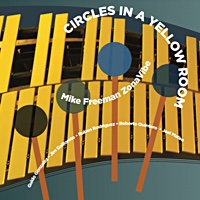Yes, the iPad has fewer features than a comparably priced netbook. Yes, its tied to an app store controlled by a single company that has proven to be both capricious and prudish in the kinds of content it approves. And yes, it wont run Adobe Flash, instantly crippling many websites.
Instead of living inside a box, content takes over the device. There's almost no noticeable interface.But the iPad is an important device just the same, because its simple and its fast.
Early reviews of the iPad confirm my experience using the device during Apples press event two months ago: there's something seriously different about Apples tablet.
That difference can be summarized in two words: It disappears.
Its basically a screen. There's a home button, and some buttons on the side that you don't pay much attention to while you're using it.
On the iPad, websites look pretty much the same as they do on my computer display, with one important exception: They fill the screen. Instead of living inside a box with a URL bar and a bunch of buttons alongside other boxes and applications, content takes over the device. There's almost no noticeable interface.
On top of that, the screen is the most responsive touchscreen display Ive ever had my hands on. Put your finger down on a page and wiggle it around, and the page follows your finger exactly, and instantly.
Those two facts the lack of interface and the instant responsiveness lend a psychological concreteness to whatever you're looking at. You're not just looking at Wired.com through a browser, you're holding Wired.com in your hands.
Ditto for photos, calendar entries, e-mail messages and even video: You feel as though you're holding the actual pictures, calendar pages, messages and movies.
Its a subtle difference and, rationally speaking, it is irrelevant to the content that appears beneath the glass face of the LCD. You get exactly the same words and pictures (but not, of course, any Flash video or animations.) But its a profoundly different feeling for the human on this side of the glass. It makes the content feel more immediate, more real and more in the world.
Over time, that's going to make profound changes to THE way web designers create and deploy their sites, to the way we think about online content, and to the way we think about computers.
In fact, its the beginning of the end for computers as technology. Technology, after all, is stuff that doesn't work yet, as Douglas Adams observed a decade ago. Once it starts working all the time like chairs or electricity you stop thinking about it as technology and start taking it for granted.
The iPad promises much, and we have yet to find out if it lives up to its expectations. Make no mistake: Once we have unfettered access to the device, we will be testing the iPad thoroughly to find out where, and how, it breaks down, and well report the results here.
Instead of living inside a box, content takes over the device. There's almost no noticeable interface.But the iPad is an important device just the same, because its simple and its fast.
Early reviews of the iPad confirm my experience using the device during Apples press event two months ago: there's something seriously different about Apples tablet.
That difference can be summarized in two words: It disappears.
Its basically a screen. There's a home button, and some buttons on the side that you don't pay much attention to while you're using it.
On the iPad, websites look pretty much the same as they do on my computer display, with one important exception: They fill the screen. Instead of living inside a box with a URL bar and a bunch of buttons alongside other boxes and applications, content takes over the device. There's almost no noticeable interface.
On top of that, the screen is the most responsive touchscreen display Ive ever had my hands on. Put your finger down on a page and wiggle it around, and the page follows your finger exactly, and instantly.
Those two facts the lack of interface and the instant responsiveness lend a psychological concreteness to whatever you're looking at. You're not just looking at Wired.com through a browser, you're holding Wired.com in your hands.
Ditto for photos, calendar entries, e-mail messages and even video: You feel as though you're holding the actual pictures, calendar pages, messages and movies.
Its a subtle difference and, rationally speaking, it is irrelevant to the content that appears beneath the glass face of the LCD. You get exactly the same words and pictures (but not, of course, any Flash video or animations.) But its a profoundly different feeling for the human on this side of the glass. It makes the content feel more immediate, more real and more in the world.
Over time, that's going to make profound changes to THE way web designers create and deploy their sites, to the way we think about online content, and to the way we think about computers.
In fact, its the beginning of the end for computers as technology. Technology, after all, is stuff that doesn't work yet, as Douglas Adams observed a decade ago. Once it starts working all the time like chairs or electricity you stop thinking about it as technology and start taking it for granted.
The iPad promises much, and we have yet to find out if it lives up to its expectations. Make no mistake: Once we have unfettered access to the device, we will be testing the iPad thoroughly to find out where, and how, it breaks down, and well report the results here.
For more information contact All About Jazz.




































